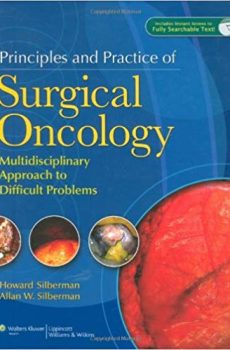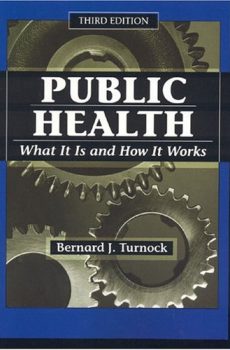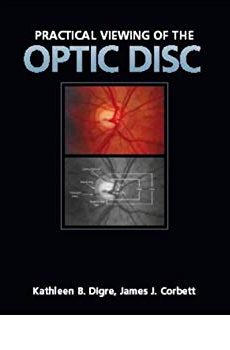
Practical Viewing of the Optic Disc
10,500.00₹ 4,591.00₹
This unique manual and accompanying CD-ROM assists you in accurately viewing the optic disc to discover abnormalities and improve your viewing technique. Concise and reader friendly, it helps you determine clues to underlying pathology, including intracranial pressure, diabetes, hypertension, and emboli. Topics include swollen optic disc, atrophy, vascular events at the disc and retina, common retinal and macular disease, and phakomatoses. The accompanying full color CD-ROM, with exceptional photographs and video, takes you on a journey through identifying structures with direct fluorescein angiography, examining the fundus, and watching blood flow through the eye.
- Determine underlying causes to common medical complaints
- Includes 4 – color CD – ROM complete with video fundus examinations showing venous pulsations
- Contains more than 100 differential diagnosis tables
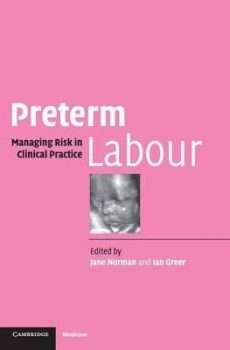
Preterm Labour
7,095.00₹ 5,395.00₹
This volume summarizes advances in the optimal clinical management of preterm labour, using the best available evidence of the time. The contributors (mostly practising clinicians) are all actively involved in research into the mechanisms, aetiology, treatment and associated outcomes of preterm labour. The chapters are based on common clinical scenarios and each provides a comprehensive literature review followed by evidence-based recommendations on appropriate management. A summary of the pathophysiology of parturition is provided, and the obstetric scenarios cover management of threatened preterm labour, management of preterm premature ruptured membranes and management of preterm labour with specific complications (such as intrauterine growth restriction). Other chapters include the epidemiology, prediction and prevention of preterm labour. Anaesthetic and paediatric issues are explored in depth, and there are chapters on the legal and organizational issues surrounding preterm labour.
- Preterm delivery remains a pre-eminent problem in modern obstetrics
- Contributing authors are all actively involved in research into the mechanisms, aetiology, treatment and associated outcomes
- Also covers epidemiology, prediction and the prevention of preterm delivery
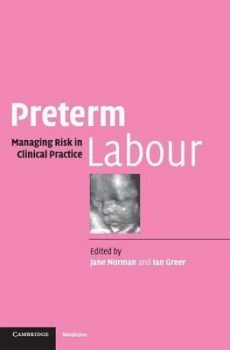
Preterm Labour
7,199.00₹ 5,090.00₹
This volume summarizes advances in the optimal clinical management of preterm labour, using the best available evidence of the time. The contributors (mostly practising clinicians) are all actively involved in research into the mechanisms, aetiology, treatment and associated outcomes of preterm labour. The chapters are based on common clinical scenarios and each provides a comprehensive literature review followed by evidence-based recommendations on appropriate management. A summary of the pathophysiology of parturition is provided, and the obstetric scenarios cover management of threatened preterm labour, management of preterm premature ruptured membranes and management of preterm labour with specific complications (such as intrauterine growth restriction). Other chapters include the epidemiology, prediction and prevention of preterm labour. Anaesthetic and paediatric issues are explored in depth, and there are chapters on the legal and organizational issues surrounding preterm labour.
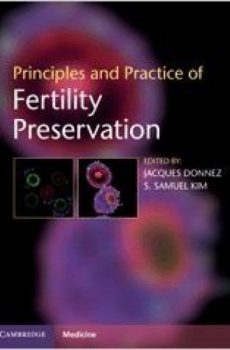
Principles and Practice of Fertility Preservation
12,995.00₹ 6,990.00₹
The specialty of fertility preservation offers patients with cancer, who are rendered infertile by chemo- and radiotherapy, the opportunity to realize their reproductive potential. This gold-standard publication defines the specialty. The full range of techniques and scientific concepts is covered in detail, and the author team includes many of the world’s leading experts in the field. The book opens with introductions to fertility preservation in both cancer and non-cancer patients, followed by cancer biology, epidemiology and treatment, and reproductive biology and cryobiology. Subsequent sections cover fertility preservation strategies in males and females, including medical/surgical procedures, ART, cryopreservation and transplantation of both ovarian tissue and the whole ovary, and in-vitro follicle growth and maturation. Concluding chapters address future technologies, as well as ethical, legal and religious issues. Richly illustrated throughout, this is a key resource for all clinicians specializing in reproductive medicine, gynecology, oncology, hematology, endocrinology and infertility.
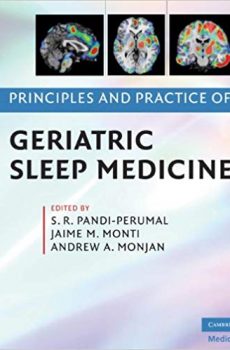
Principles and Practice of Geriatric Sleep Medicine
12,320.00₹ 3,500.00₹
Sleep disorders cause considerable morbidity and distress in the aging population. By highlighting the clinical diagnosis and management of sleep disorders, this volume provides a valuable resource for all those involved in health care of older individuals. The changes in sleep patterns that occur during normal aging are described, followed by authoritative chapters on the presentation of various age-related sleep disorders. The book deals with the range of therapeutic measures available for managing these disorders and gives insight to potential areas of research that have emerged in the last few years, such as the study of circadian rhythms in later life, sleep patterns associated with co-morbidities and the use of quality-of-life measurement tools to determine sleep quality as we age. This volume is relevant to sleep disorders specialists, psychiatrists, geriatricians and gerontologists, and any professionals and researchers working in the interdisciplinary areas of sleep and aging.
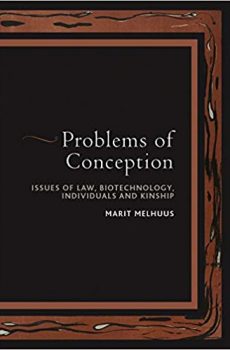
Problems of Conception
8,400.00₹ 2,995.00₹
The Biotechnology Act in Norway, one of the most restrictive in Europe, forbids egg donation and surrogacy and has rescinded the anonymity clause with respect to donor insemination. Thus, it limits people’s choice as to how they can procreate within the boundaries of the nation state. The author pursues this significant datum ethnographically and addresses the issues surrounding contemporary bio-politics in Norway. This involves investigating such fundamental questions as the relation between individual and society, meanings of kinship and relatedness, the moral status of the embryo and the role of science, religion and ethics in state policies. Even though the book takes reproductive technologies as its focus, it reveals much about vital processes that are central to contemporary Norwegian society.

Professional Identities: Policy and Practice in Business and Bureaucracy
8,400.00₹ 1,700.00₹
In both professional and academic fields, there is increasing interest in the way in which white-collar workers engage with institutions and networks which are complex social constructions. Covering a wide variety of countries and types of organization, this volume examines the diverse ways in which individuals’ ethnic, gender, corporate and professional identities interact. This book brings together fields often viewed in isolation: ethnographies of groups traditionally studied by anthropologists in new organisational contexts, and examinations of the role of identity in corporate life, opening up new perspectives on central areas of contemporary human activity. It will be of great interest to those concerned with practical management of institutions, as well as those of us who find ourselves working within them.

Progress In Colorectal Surgery
7,520.00₹ 7,449.00₹
Takes a problem oriented approach to discuss the key concepts in the field of colorectal surgery. – Includes recent progress in imaging techniques and how they are useful to the surgeon. – Highlghts not only the medical apsects of coloproctology, but the legal concerns for the physician as well.Recognizing that the surgeon does not work in isolation, this book looks at the progress in imaging techniques for the anal canal and rectum, and highlights medico-legal considerations. It discusses concepts that will assist general surgeons and colorectal consultants in their management of patients with a range of anorectal and colonic disorders.
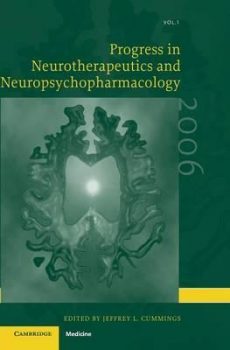
Progress in Neurotherapeutics and Neuropsychopharmacology
12,180.00₹ 2,770.00₹
Published annually, volumes in this series provide readers with updates of clinical trial results, impacts of trials on guidelines and evidence-based practice, advances in trial methodologies, and the evolution of biomarkers in trials. The series focuses on trials in neurotherapeutics, including disease-modifying and symptomatic agents for neurological diseases, psychopharmacological management of neurologic and psychiatric illnesses, and non-drug treatments. Each paper is authored by a leader in the area of neurotherapeutics and clinical trials, and the series is guided by an editor-in-chief and editorial board with broad experience in drug development and neuropsychopharmacology. Progress in Neurotherapeutics and Neuropsychopharmacology is an essential update of trials in all aspects of the management of neurologic and neuropsychiatric disorders, and will be an invaluable resource for practising neurologists as well as clinical and translational neuroscientists.
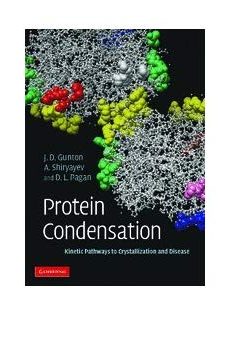
Protein Condensation: Kinetic Pathways To Crystallization And Disease
9,990.00₹ 4,395.00₹
The quest to understand the condensation of proteins from solutions is a rapidly evolving field. The purpose of this book is to bring to an interdisciplinary audience the state-of-the-art in current research. The first part of the book deals with issues related to the production of high quality protein crystals from solution. Since protein function is determined by structure, high quality protein crystals must be grown in order to determine their structure by X-ray crystallography. The book also discusses diseases that occur due to undesired protein condensation, an increasingly important subject. Examples include sickle cell anemia, cataracts and Alzheimer’s disease. Current experimental and theoretical work on these diseases is discussed, which seeks understanding at a fundamental, molecular level, to prevent the undesired condensation from occurring. The book, containing color plate sections, is suitable for graduate students and academic researchers in physics, chemistry, structural biology, protein crystallography and medicine.
- An introduction to a rapidly expanding field
- Reviews current experimental work for several important proteins to provide cutting-edge summary of current experimental knowledge
- Contains works from many different disciplines
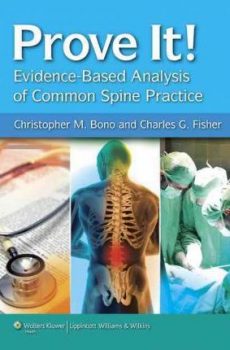
Prove It! Evidence-Based Analysis of Common Spine Practice
10,090.00₹ 2,200.00₹
Prove It! Evidence-Based Analysis of Common Spine Practice offers spine surgeons detailed guidance in using the principles of evidence-based medicine in treatment decisions. The book presents a unique collection of 31 case studies in which noted experts review a patient’s signs and symptoms and relevant images to determine the best-fitting diagnosis and then to develop a treatment plan based on the best available published evidence. The case-based approach allows the reader to see how evidence-based medicine can be directly and practically applied to the care of patients with a variety of disorders
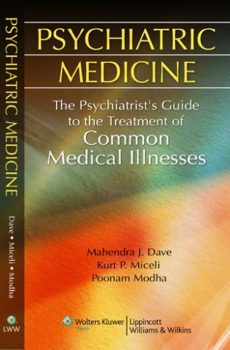
Psychiatric Medicine
3,590.00₹ 1,190.00₹
This handbook is a concise, portable ready reference for diagnosing and treating common medical illnesses encountered in psychiatric patients, particularly those in an inpatient service. The first section explains laboratory tests used to diagnose medical illness. The second section covers 59 medical symptoms and diseases. The third section focuses on important syndromes which have specific psychiatric manifestations or are caused by psychotropic drugs.
Particular attention is given to basic understanding of lab tests and drug dosing. “Pearls” and “pointers” increase the book’s utility. Appendices offer guidelines on monitoring for psychiatric medications and list key medical abbreviations.

Psychopathology and the Family
9,870.00₹ 6,390.00₹
Understanding the factors that place an individual at greater risk of developing psychopathology has important implications for both treatment and prevention of psychological disorders. Of critical relevance in this regard is the exploration of the potential influence of the family. Parenting and the family environment are considered to significantly contribute to a child’s early development and adjustment. It follows then that parental behavior may also be of importance in the development, maintenance and or the prevention of psychopathology. Over the past 50 years there has been a considerable amount of research as well as controversy surrounding the link between parenting and psychopathology. The purpose of this book is to provide researchers and clinicians with state-of-the art research findings, presented by experts in the field, on the role of the family in the development and maintenance of psychopathology.
This edited book is divided into 3 sections. The first addresses broader issues of theory and methodology and the second provides separate chapters relating to the role of the family in the development and maintenance of specific psychopathologies. A final section discusses the involvement of the family in treatment and prevention.

Psychoprosthetics
9,995.00₹ 1,995.00₹
Psychoprosthetics is the study of the psychological aspects of prosthetic use and of rehabilitative processes in those conditions that require the use of prosthetic devices. For people with limb loss, the fitting of a prosthesis can give rise to a variety of issues from functional rehabilitation to quality of life, well-being, participation in society and cosmetic satisfaction. As prosthetic technology continues to become more sophisticated and advanced, there is an onus on those who work with prosthetic users, to be aware of the impact of prosthetics on the ways in which people understand and construct their realities and their attempts to cope with and relate to them. However, despite the broad and increasing interest in psychosocial aspects of prosthetic use and rehabilitation, to date there has not been a complete volume on the topic – this book now addresses that need.
Psychoprosthetics brings together the most recent and exciting research and knowledge in this new field into one easily accessible volume. It contributes to a better understanding of the complex human dynamics involved in prosthetic use and provides an analysis of the practice, research and theory in the field of psychoprosthetics.
Written by some of the leading experts to the field, this informative and cutting-edge text will be of relevance to students, practitioners and researchers from a wide range of disciplines, including prosthetics and orthotics, occupational therapy, physiotherapy, rehabilitation medicine, engineering, nursing and psychology.

Public Private Partnerships in Ireland
6,900.00₹ 3,499.00₹
Public Private Partnerships (PPPs) have come to public attention in recent years in Ireland with the impact of toll roads, the collapse of social-housing projects and their use in the provision of courts buildings, schools, water/waste water treatment plants, hospitals, light rail and other public infrastructure and services. This book provides a ground breaking and unique analysis of the development of such PPPs internationally, with a detailed focus on the rationale behind their introduction and outcomes in Ireland. The detailed evidence outlined from the author’s extensive research (including interviews with senior central and government officials, private sector, community and trade union representatives and the Irish Minister for Environment) highlights the important role PPPs are playing in the implementation of privatisation and neoliberalism. The book also provides considerable practical lessons from individual PPP projects. It is therefore an essential read for students, academics of politics, economics, sociology, geography and policy practitioners in Ireland, and further afield. It is of considerable interest to anyone concerned with the progress of Irish society, its economy and, indeed public services and governance internationally. — .

Pulp Writer: Twenty Years in the American Grub Street
1,390.00₹ 1,090.00₹
He wrote under at least eight pseudonyms, published hundreds of short stories and novellas in pulp magazines, and lived a life at times as outrageous as his fiction. Pulp Writer tells of Paul S. Powers’s travels from serious literary ambitions to the pages of Wild West Weekly, of his seeking his fortune (or material, at any rate) in the ghost towns and mining camps of Colorado, and of his life in Arizona and California as he reaped the rewards of his wildly successful Wild West Weekly characters such as Sonny Tabor and Kid Wolf.
Extending from the Great Depression to the golden age of the pulps, Powers’s career, chronicled here in often laugh-out-loud style, is an American success story of true grit and commercial savvy and of a larger-than-life character with questionable but endlessly entertaining Western lore to spare. In the process, he provides a valuable and rarely-chronicled look at the business of writing and publishing pulp fiction during its golden years.
Powers’s granddaughter Laurie never knew her grandfather and lost touch with his side of the family. In her biographical essays, she finds her lost family and discovers the Pulp Writer manuscript. Her essays also provide a valuable historical context for pulp publications such as Wild West Weekly and their importance during the Great Depression.
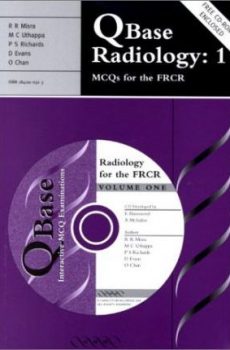
Qbase Radiology 1
3,520.00₹ 2,320.00₹
QBase Radiology 1 and 2 together represent a completely comprehensive resource for all postgraduate and undergraduate trainees in radiology. In combination, the books include 900 multiple choice questions (480 on Volume 1 and 420 on Volume 2) and the free CD-ROMs that accompany both books also contain all 900 MCQs and over 100 high quality radiological images. The powerful QBase examination analysis software allows the reader to attempt the same exams as printed in the book, but on screen, realistically replicating the examination situation. The user can also ‘custom-build’ their own exams based on their own choice of subjects and number of questions, sit an exam that is automatically set by the program using all of the questions on the CD, or they can sit a ‘shuffled’ version of an exam, whereby the question parts (A-E) are reorganised automatically to avoid pattern recognition. The software also allows the user to set their own ‘confidence level’ when taking an exam and it will automatically mark, analyse and store completed exams for future review and re-sitting, allowing the package to be used as a fully interactive self-learning tool.

Quebee Hydropolitics
2,295.00₹ 1,695.00₹
The construction in the 1940s of hydroelectric dams and reservoirs, Lakes Manouan and Passe Dangereuse, were enormous projects that had consequences not only on the environment but also on international affairs. Built by the Aluminium Company of Canada (Rio Tinto Alcan), the project helped meet the American and Allied Forces demand for electrical power and aluminium ingot during the Second World War but also forced Innu/Montagnais hunter-trappers from their ancestral lands. Examining sources as varied as the papers of the Franklin D. Roosevelt Presidential Library and interviews with Montagnais elders, Quebec Hydropolitics presents a compelling synthesis of business and social history as well as wartime politics. David Massell reconstructs the story of a changing landscape through the perspectives of corporate executives, government officials, and Aboriginals to show the effect that war had on Canadian resource extraction and energy policy as well as its indigenous peoples. A narrative that flows from the Saguenay watershed to the centres of political power, Quebec Hydropolitics is an informative look at the costs and benefits of large-scale industrialization.







